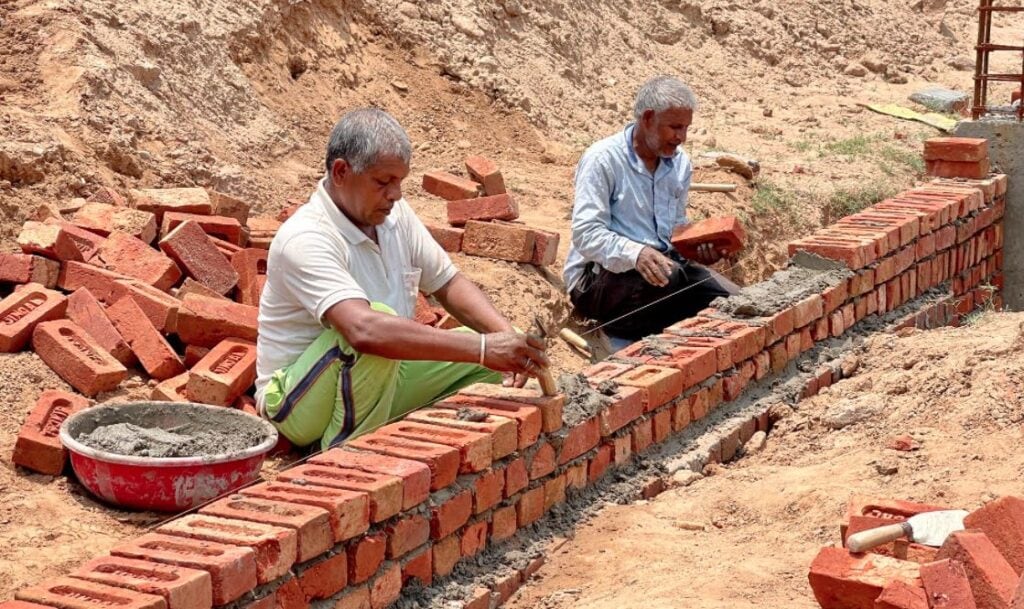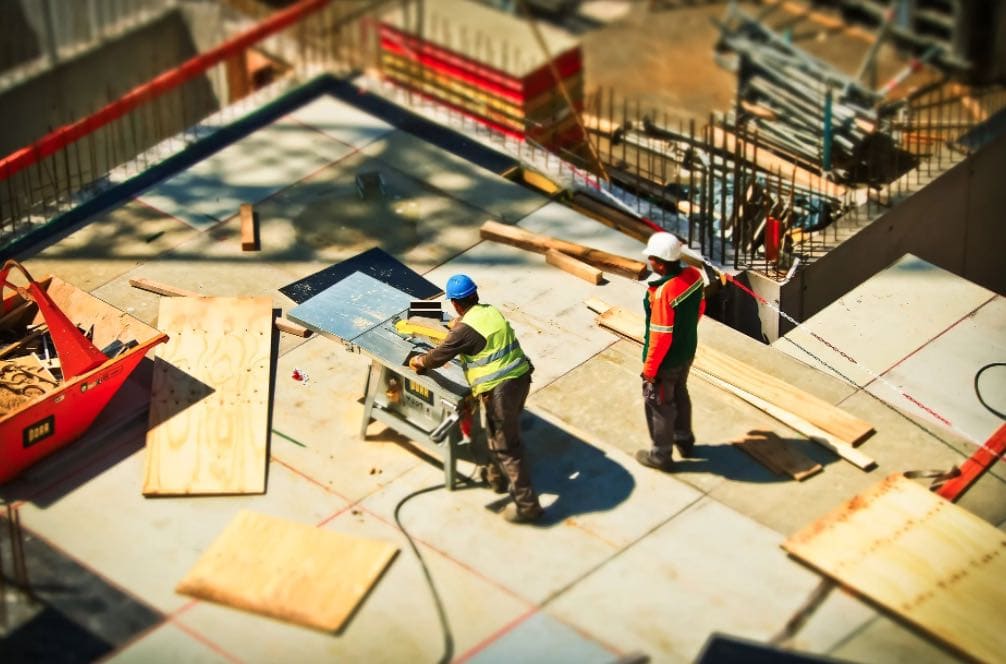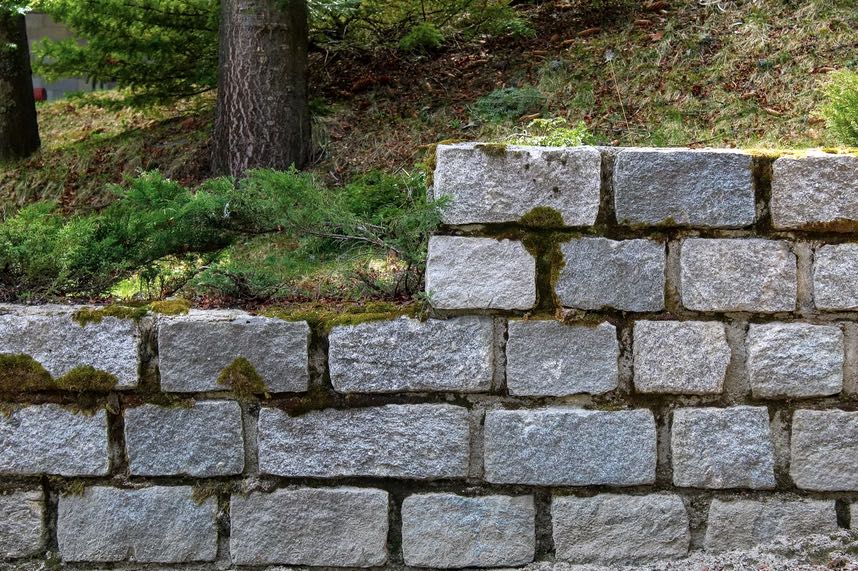Stonemasonry has existed ever since humans began to make and use tools. It, therefore, has a long and noble history with stonemasons responsible for making the world’s most iconic buildings, including the Egyptian Pyramids, Stonehenge, famous temples in Asia like Angkor Wat and Borobudur, plus Greek national treasures like the Acropolis and the Parthenon.
The craft has developed over millennia, and stonemasons occupy a unique place in the world of industry and trade. They were revered for centuries, which aided motivation and advancement of craftsmanship as stonemasons competed to create the most breath-taking pieces of work. To this day, stonemasons combine the skills of artisans, geologists, builders, engineers and designers to prepare, cut, trim and fix stone for a variety of purposes.
Suppose you are looking for a practical job that requires a high level of attention to detail and a role that allows you to be creative, work as part of a team, and keeps you fit and active. In that case, you may be interested in learning more about becoming a stonemason.
This guide has been put together as an educational tool. Many people will have a basic knowledge of what a stonemason is, but it can often seem like a distant, closed career choice. We don’t believe that to be the case.

Here you will learn more about the two key types of stonemasonry and other related fields, the skill sets required, and how to enter the industry, plus much more.
We’ve also included some links to essential further reading with extra information and resources we encourage you to read if you would like to learn more.
Stonemasonry refers to the formation of buildings, structures, and sculptures using stone. In early history, this group of men, stonemasons, we’re relied upon to build some of the most impressive and famous landmarks in history. From the Egyptian pyramids to Greek temples and Parisian palaces, stonemasons are, quite literally, the foundation of modern civilisation.
Stonemasons played a pivotal role in the development of architecture and economics, religion, politics, and society. During the medieval era, homes and towns were built throughout Europe and cathedrals, mansions, and castles across the continent and the world. These structures are home to much of the world’s history, serving as the locations where religion prospered, and governments were formed.
What is a Stonemason?
Stonemasons cut and prepare stone to build or repair stone structures. These may include homes, historical buildings, monuments, headstones and statues. Stonemasons may also use a range of other natural materials, such as granite and quartz.
A stonemason takes rough pieces of rock or stone and shapes them into geometric shapes to create a structure and art. These structures can include monuments, buildings, cathedrals, tombstones, etc. Stonemasons take great pride in being able to produce beautiful yet functional work that is uniquely suited for each client.
Stonemasons have been responsible for the construction of buildings, statues and structures since the beginning of civilisation. Some of the greatest pieces of art and most notable structures were created by stonemasonry workers; the Easter Island statues, the Taj Mahal, Stonehenge, the Egyptian Pyramids, and the Chartres Cathedral, to name a few.
Types of Stonemason
Banker Mason
A bank mason is usually located in a workshop and uses various hand and power tools to cut, carve and shape stone. The stones size and shape are determined by builders or other parties beforehand, so a bank mason will generally work from a brief or set of designs provided for a particular project. Once created to the specifications needed, the stone will be transferred somewhere else for use in a building or other arrangement.
These masons are generally based in workshops and cut, carve, and shape stone using various hand and power tools. Then, builders or other designers work to briefs to make stones the correct size and shape for use elsewhere.
A banker mason takes these stones into their workshop and further hones them into the building designs’ shape and size. A banker mason’s goal is to make sure that the shaped stone is oriented in the building in a natural position as it was oriented in the ground.
Memorial Masons
Memorial masons carve into stone, notably gravestones, headstones, statues, memorial plaques and memorials. They are used by councils and local government, funeral parlours, crematoriums, and fashion intricate memorial inscriptions.
Fixer Mason
In contrast to a banker mason, a fixer mason will travel to a job to both fit and lay already-prepared stone or cladding for buildings. They will follow blueprints to complete this and replace, repair, and restore stonework that already exists. Being a fixer mason is actually highly skilled and dangerous work. They need to be experts in permanently fixing heavy stone with mortar onto a building or creating specialist fitting that can be large and weighty, making it tricky work.
Fixers travel to jobs to fit and lay pre-prepared stone or cladding for buildings, following blueprints. They also repair, replace and restore existing stonework. However, specialising in fixing often heavy stone permanently onto building structures with mortar or specialist fittings is highly dangerous and skilled work.
A fixer mason specialises in permanently fixing stone onto building structures using various epoxy resins and cement forms. This is a highly dangerous and skilled position requiring precise tolerances and works at high altitudes while manipulating very heavy pieces of stone using tackle lift systems.
Quarryman
In its most basic form, a quarryman is a stonemason that works in a quarry to extract chunks of stone. These rough pieces then get collected and taken to another place to get refined. They can be a range of marble, flint, granite or limestone (but can also be even more basic, such as sand or gravel, depending on the quarry).
Sawyer Mason
A sawyer mason is like a banker mason – they get the rough pieces of stone and work them to a series of standards (depending on a range of considerations). The difference between a sawyer mason and a banker mason is the size of stone that they work with – a sawyer mason usually works with pieces much larger than what a banker mason works with, and they use diamond-tipped tools.
Carver Mason
Finally, carver mason is the artist of the industry – they are the people who create designs and patterns from stone and on stones. This could be something like a stone sculpture of a particular figure or animal or other projects of a similar nature. Throughout time, carver masons have been known for their exceptional skills in creating beautiful pieces.
What is the workplace of a Stonemason like?

A stonemason’s workplace is generally outdoors and relatively hazardous, making hard hats and caution extremely important. The work is physically demanding, and contracts are often less frequent in times of bad weather as stonemasons typically work outside. However, various advancements in masonry technology allow modern-day masons to work outside in varying weather conditions.
The work can be considered hard physical labour, as stonemasons are required to climb scaffolding, use chisels and hammers, and spend all day bending, kneeling and lifting heavy materials over rough terrain. In addition, stonemasons will often be contracted privately and therefore have a time schedule to keep, meaning overtime and weekend work is often necessary to meet deadlines.
What does a stonemason do?
As a stonemason, you will be responsible for helping to repair or maintain structures, such as churches or houses. This can include cutting or carving various types of stone, and you will usually have to ensure you preserve the look and feel of the building.
The job role of a stonemason involves the following duties:
- Repairing old buildings and monuments
- Making and fitting stonework like window frames and archways
- Dressing stone and building walls
- Carving and repairing headstones and statues
- Working with different materials, including slate, sandstone, limestone, marble and granite
- Interpreting technical drawings
- Working with a range of hand tools
- Collaborating with historians and conservationists
- Thinking creatively and problem-solving
- Lifting and carrying heavy materials and equipment
- Working indoors or outdoors, sometimes at height and in dusty environments.
Work Activities
- Handling and Moving Objects — Using hands and arms in handling, installing, positioning, and moving materials, and manipulating things.
- Performing General Physical Activities — Performing physical activities that require considerable use of your arms and legs and moving your whole body, such as climbing, lifting, balancing, walking, stooping, and handling materials.
- Communicating with Supervisors, Peers, or Subordinates — Providing information to supervisors, coworkers, and subordinates by telephone, in written form, e-mail, or in person.
- Coordinating the Work and Activities of Others — Getting members of a group to accomplish tasks.
- Training and Teaching Others — Identifying the educational needs of others, developing formal educational or training programs or classes, and teaching or instructing others.
- Getting Information — Observing, receiving, and otherwise obtaining information from all relevant sources.
- Inspecting Equipment, Structures, or Material — Inspecting equipment, structures, or materials to identify the cause of errors or other problems or defects.
- Estimating the Quantifiable Characteristics of Products, Events, or Information — Estimating sizes, distances, and quantities; or determining time, costs, resources, or materials needed to perform a work activity.
- Establishing and Maintaining Interpersonal Relationships — Developing constructive and cooperative working relationships with others, and maintaining them over time.
- Making Decisions and Solving Problems — Analysing information and evaluating results to choose the best solution and solve problems.
- Organising, Planning, and Prioritizing Work — Developing specific goals and plans to prioritise, organise, and accomplish your work.
- Thinking Creatively — Developing, designing, or creating new applications, ideas, relationships, systems, or products, including artistic contributions.
- Resolving Conflicts and Negotiating with Others — Handling complaints, settling disputes, and resolving grievances and conflicts, or otherwise negotiating with others.
- Coaching and Developing Others — Identifying the developmental needs of others and coaching, mentoring, or otherwise helping others improve their knowledge or skills.
- Scheduling Work and Activities — Scheduling events, programs, and activities, as well as the work of others.
- Operating Vehicles, Mechanized Devices, or Equipment — Running, maneuvering, navigating, or driving vehicles or mechanised equipment, such as forklifts, passenger vehicles, aircraft, or watercraft.
- Drafting, Laying Out and Specifying Technical Devices, Parts, and Equipment — Providing documentation, detailed instructions, drawings, or specifications to tell others how devices, parts, equipment, or structures will be fabricated and constructed assembled modified, maintained, or used.
- Identifying Objects, Actions, and Events — Identifying information by categorising, estimating, recognising differences or similarities, and detecting changes in circumstances or events.
- Evaluating Information to Determine Compliance with Standards — Using relevant information and individual judgment to determine whether events or processes comply with laws, regulations, or standards.
- Provide Consultation and Advice to Others — Providing guidance and expert advice to management or other groups on technical, systems-, or process-related topics.
- Judging the Qualities of Things, Services, or People — Assessing the value, importance, or quality of things or people.
- Monitoring and Controlling Resources — Monitoring and controlling resources and overseeing the spending of money.
- Guiding, Directing, and Motivating Subordinates — Providing guidance and direction to subordinates, including setting performance standards and monitoring performance.
- Interpreting the Meaning of Information for Others — Translating or explaining what information means and how it can be used.
- Repairing and Maintaining Mechanical Equipment — Servicing, repairing, adjusting, and testing machines, devices, moving parts, and equipment that operate primarily based on mechanical (not electronic) principles.
- Communicating with Persons Outside Organization — Communicating with people outside the organisation, representing the organisation to customers, the public, government, and other external sources. This information can be exchanged in person, in writing, or by telephone or e-mail.
- Developing and Building Teams — Encouraging and building mutual trust, respect, and cooperation among team members.
- Developing Objectives and Strategies — Establishing long-range objectives and specifying the strategies and actions to achieve them.
- Controlling Machines and Processes — Using either control mechanisms or direct physical activity to operate machines or processes (not including computers or vehicles).
- Staffing Organisational Units — Recruiting, interviewing, selecting, hiring, and promoting employees in an organisation.
- Performing for or Working Directly with the Public — Performing for people or dealing directly with the public. This includes serving customers in restaurants and stores and receiving clients or guests.
- Monitor Processes, Materials, or Surroundings — Monitoring and reviewing information from materials, events, or the environment, to detect or assess problems.
- Updating and Using Relevant Knowledge — Keeping up-to-date technically and applying new knowledge to your job.
- Documenting/Recording Information — Entering, transcribing, recording, storing, or maintaining information in written or electronic/magnetic form.
- Assisting and Caring for Others — Providing personal assistance, medical attention, emotional support, or personal care to coworkers, customers, or patients.
- Analysing Data or Information — Identifying the underlying principles, reasons, or information facts by breaking down information or data into separate parts.
Training, Qualifications, and Development
Stonemasonry is essentially open to anyone, and there are no formal requirements to kick-start your career as a stonemason. Qualifications you have, or have not, gained during compulsory education are generally not important. Training colleges will take students with very low GCSE grades, and employers value hands-on experience in the building trade far more highly.
For those with no prior experience in the construction field, the option is to take a college course. This will give you an initial grounding in the art and help you find work as you go up to the next level.
Popular entry-level courses recognised by the City and Guilds include the Level 1 Award in Stone Masonry Operations, the Level 1 Certificate in Construction and Building, and the Diploma in Preparation for Employment in the Construction Industries.
These are one-year courses available at colleges and further education centres across the country. Students will learn and develop basic skills relevant to working in construction, allowing them to move on to higher and more specialised qualifications and apprenticeships.
What Knowledge Is Needed To Be A Stonemason?
- Mathematics: Knowledge of arithmetic, algebra, geometry, calculus, statistics, and their applications.
- Building and Construction: Knowledge of materials, methods, and the tools involved in the construction or repair of houses, buildings, or other structures such as highways and roads.
- Public Safety and Security: Knowledge of relevant equipment, policies, procedures, and strategies to promote effective local, state, or national security operations to protect people, data, property, and institutions.
- Design: Knowledge of design techniques, tools, and principles involved in producing precision technical plans, blueprints, drawings, and models.
- Mechanical: Knowledge of machines and tools, including their designs, uses, repair, and maintenance.
- Education and Training: Knowledge of principles and methods for curriculum and training design, teaching and instruction for individuals and groups, and the measurement of training effects.
- English Language: Knowledge of the structure and content of the English language, including the meaning and spelling of words, rules of composition, and grammar.
- Psychology: Knowledge of human behaviour and performance; individual differences in ability, personality, and interests; learning and motivation; psychological research methods; and the assessment and treatment of behavioural and affective disorders.
Job Opportunities
While fixer masons, banker masons, and memorial masons are the three main types of stonemason, there are many other forms of masonry that you can read about below. In many cases, work between the different types can overlap.
Quarryman – a stonemason in the most basic sense of the word. They work in a quarry to extract rough chunks of stone, which are then moved on to be refined for use elsewhere. This could be granite, marble, limestone or flint, or for more basic materials commonly used like sand and gravel.
Heavy machinery and even explosives are often used to split sheets of rock in order to get at it. The industry employs 30,000 people across the UK in a huge variety of roles and supports even more indirectly through the industry’s spending on related services.
There are over 2000 quarries and associated manufacturing sites in the UK and marine wharves and recycling operations. Careers in Quarrying has an extensive career map to jobs in this sector for school leavers, post-college students, graduates and those considering a career change.
Sawyer mason – like banker masons, sawyers take rough chunks of stone and refine them to meet required shapes. Generally, they will deal with larger chunks than banker masons, using diamond-tipped tools.
Often working in quarries and in flooring and tile shops, they will have the skills to determine where stones will cleave by examining grain patterns; know how to remove smaller pieces from large masses; be able to carve precise outlines; drill holes into them; and use chisels to fashion the thinner sheets used to make floors and tops in kitchens, as an example.
Carver mason – in demand for their artistic abilities, carver masons are employed to create patterns and designs on or from stones. This could be stone sculptures like animals, figures or other similar projects. Throughout time, carver masons have been renowned for their skills.
